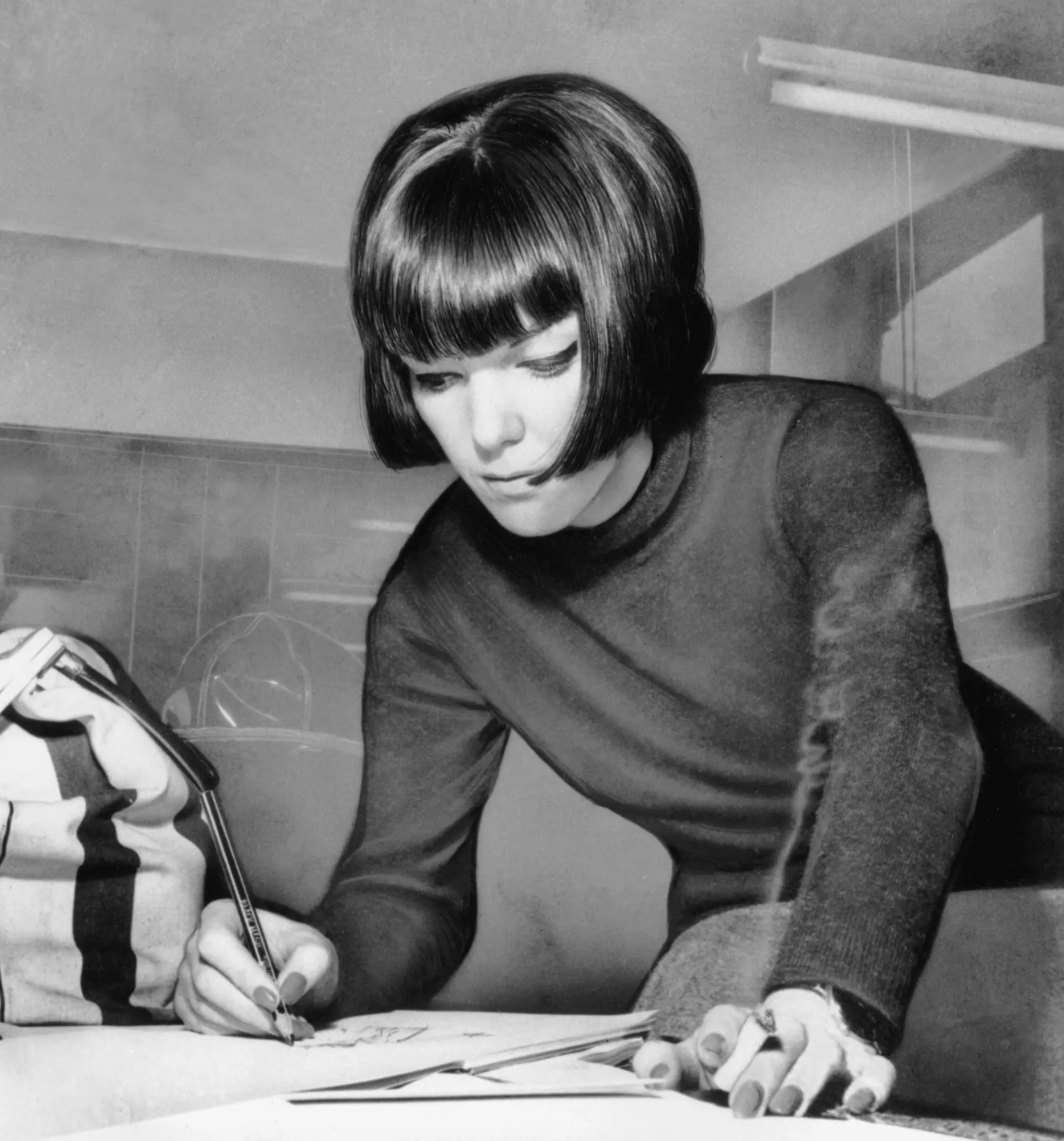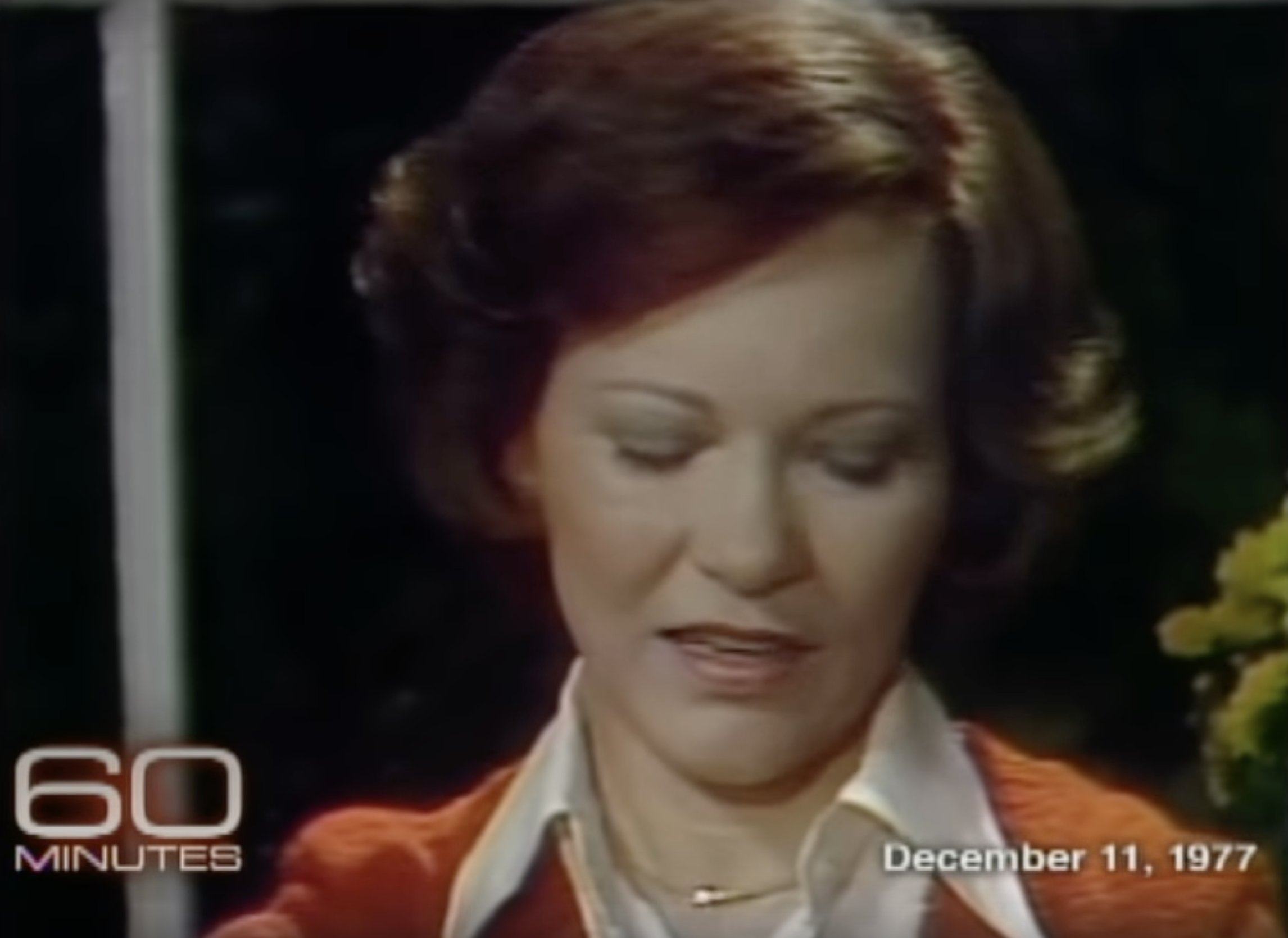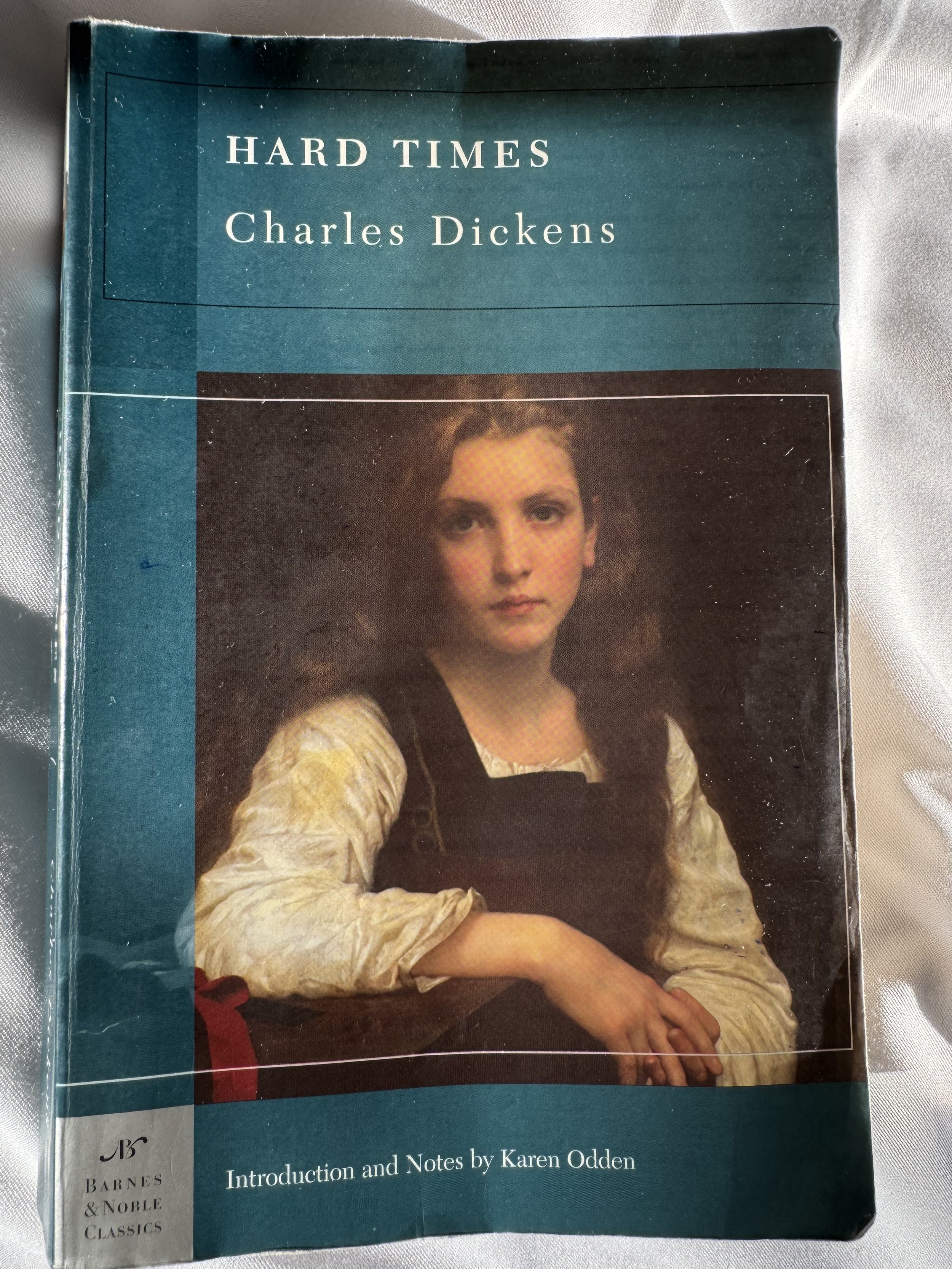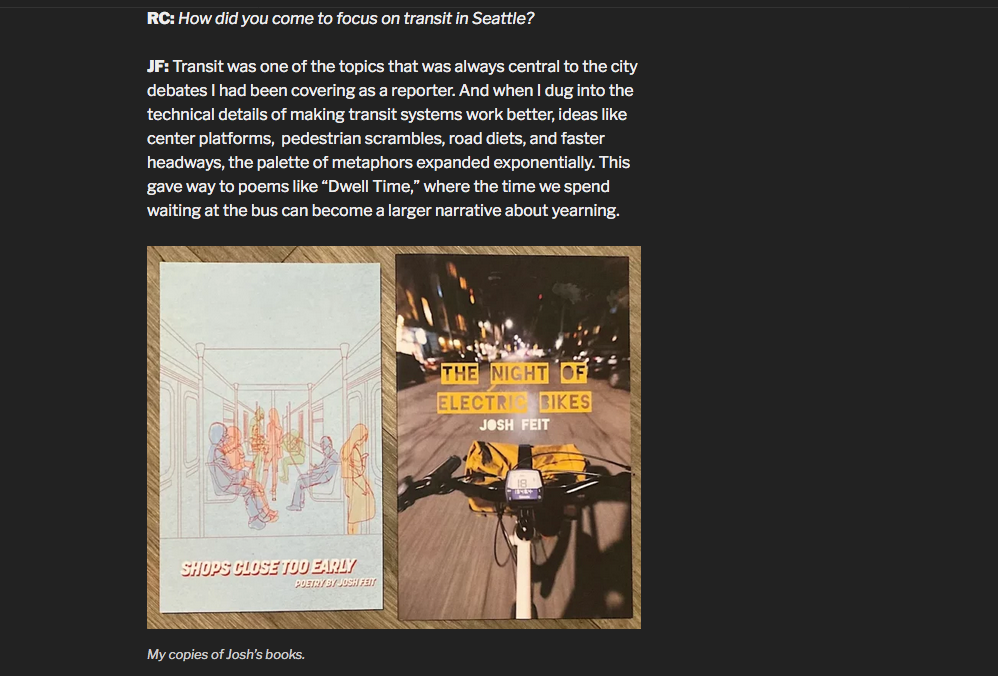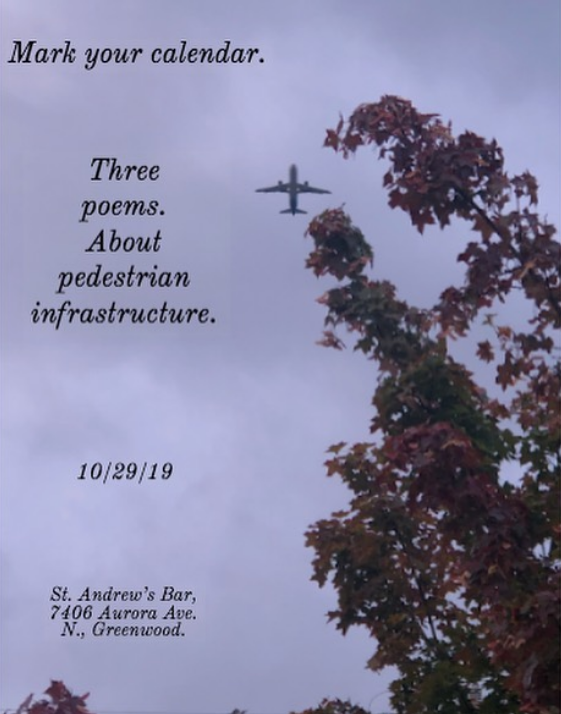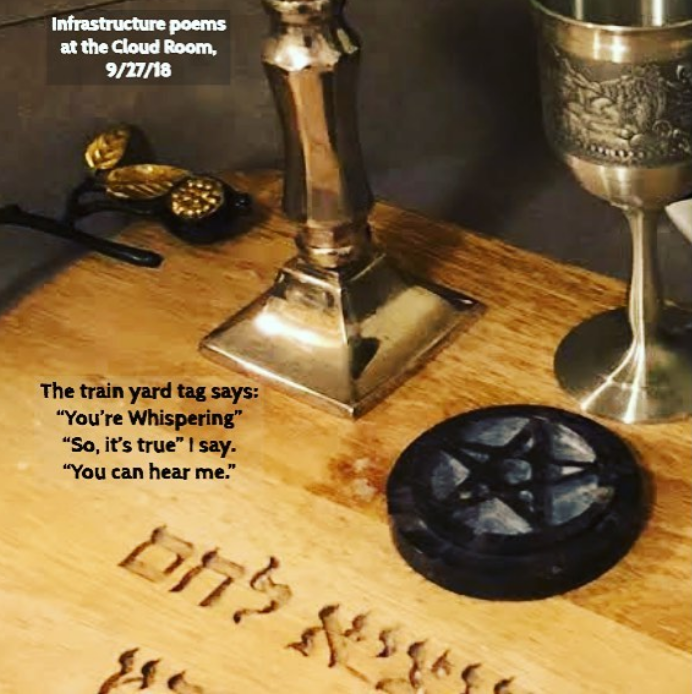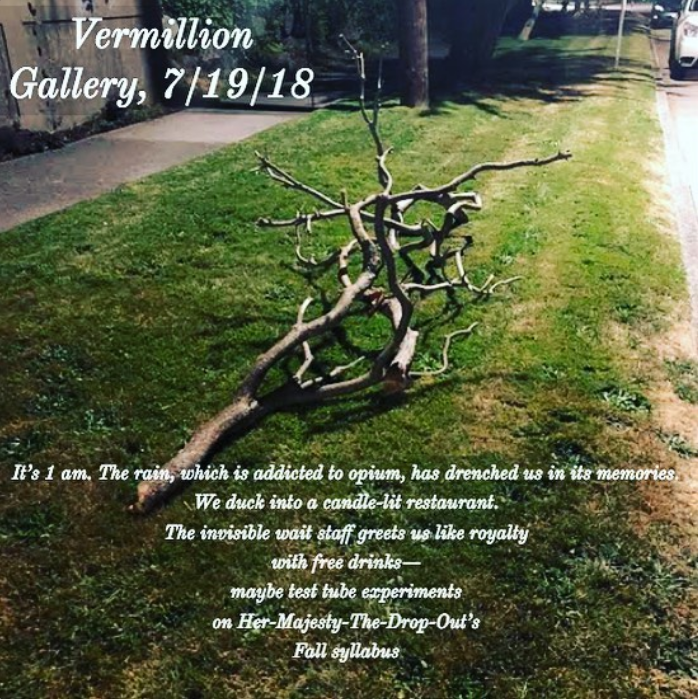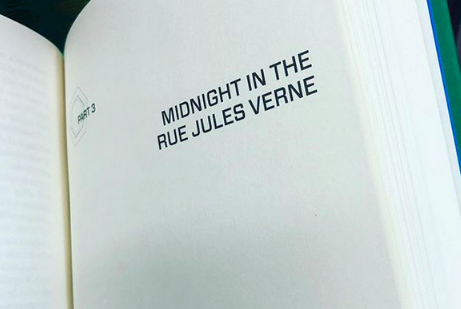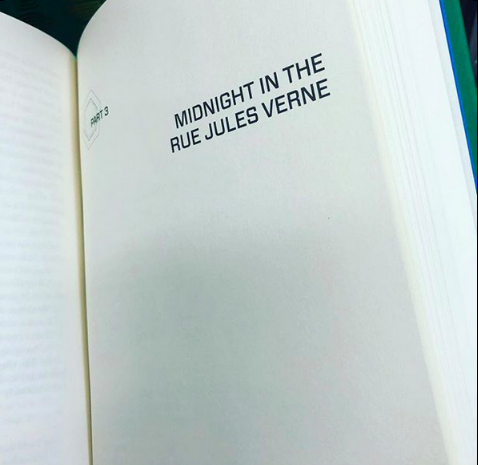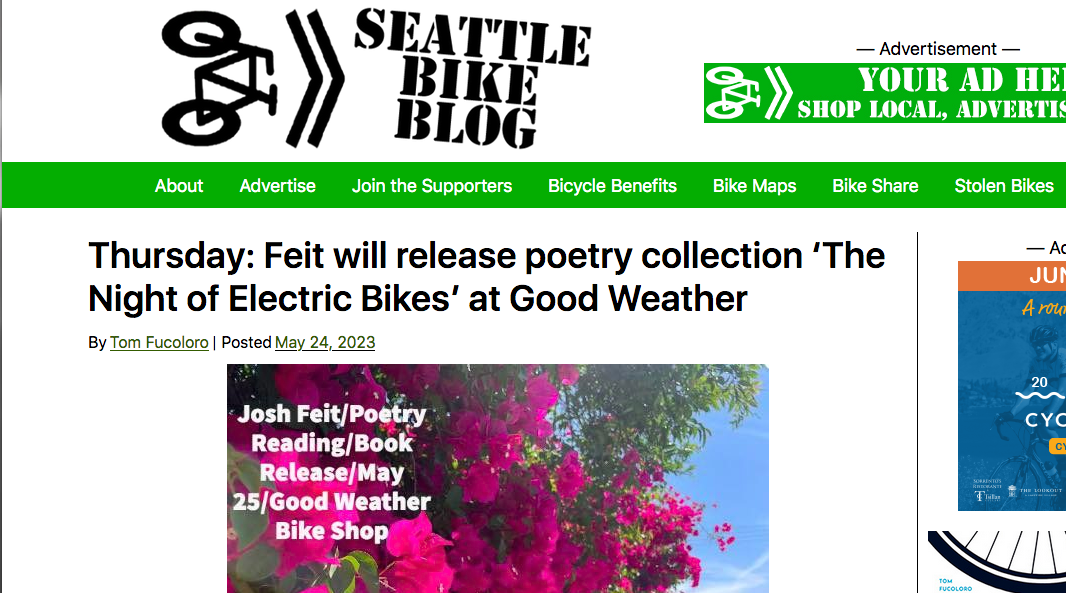Learning the “Police & Thieves” bass line; Savoring 4Columns; Reading Elizabeth Gaskell’s Mary Barton
Junior Murvin’s lovely inversions
I’m All Lost in the... in which I report on what I’m obsessing over this week.
Week #11.
1) The 1976 dub reggae tune “Police & Thieves” is the finale of my 2023 five-song piano set. I learned to play the song earlier this year from the sheet music to Junior Murvin’s original version. But because I grew up listening to the Clash’s cover rendition (one of my all-time favorite records since hearing it in junior high school), my take has turned into a hybrid between Murvin’s classic and the Clash’s cover. While largely sticking to Murvin’s softer vibes, I have replicated the Clash’s heavy back-beat chords in the left hand and incorporated their sweeping intro throughout.
But then, about a week ago—with just 10 days left in the year—I realized I was leaving out Clash bassist Paul Simonon’s signature pop-reggae riff. Junior Murvin’s lovely inversions and Joe Strummer’s whisper-spittle aside, Simonon’s syncopated bass is obviously the crowd-pleasing hook in this song.
I’m now committed to working his catchy bass into my arrangement before the year is up. With the bright, active melody line going in the right hand at the same time, it’s a tricky, but addicting, assignment.
2) I’ve been getting arts journal 4Columns’ Friday email every week since their 2016 debut. But sadly, I must say, I’d only read a handful of their articles over the years. Until recently.
If you don’t know the New York City-based journal, they have a great conceit: Every Friday, they publish four 1,000-word art reviews. Each column—published on their minimalist, yet elegant and user-friendly site, and written by a regular contributor from their impressive and erudite roster—reviews a separate, new work, be it a new exhibit at a gallery or museum, a recently-released record, a performance art opening, or a just-out book or movie.
For example, last week they cued up reviews of the following: a visual art show at Manhattan’s White Cube gallery; the new Nicki Minaj record; Michael Mann’s biopic on Enzo Ferrari; and An-My Lê’s conceptual photo exhibit at MoMA, which sounds like it’s a quantum-physics-level foray into the depressing persistence of war. Timely.
Le’s show, titled Two Rivers/Giữa hai giòng sông/Entre deux rivières, includes a sub-set series of photos titled Small Wars (1999–2002). Incongruent with those dates, the photos appear to be taken during America’s war in Vietnam; they’re actually pictures of recent re-enactments shot in the U.S. 4Columns writer Aruna D’Souza explains:
To make them, Lê sought out enthusiasts—all white men—who gather in Virginia and North Carolina on weekends to game out skirmishes. Lê convinced them to let her take pictures; they said yes, as long as she agreed to participate in the role of Viet Cong guerilla.
[One] photo is an act of displacement—spatially, but also (given the dissonance between the date the photo was taken and what it seems to represent) temporally. Indeed, the artist, who was born in Vietnam in 1960 and came to the US after the fall of Saigon, has long been interested in displacement—especially how colonialism and its violence create diasporas, dislocate cultures, and trigger unsettling aftereffects that tend to go unnoticed.
The rendering of the exhibition’s title in Vietnamese, (American) English, and French points to the intersection of forces that have shaped the modern history of Southeast Asia, while the two rivers to which it refers—the Mekong and the Mississippi—collapse the distance between Lê’s birth country, a projection screen for so many American fantasies of power, domination, and defeat, and the United States itself.
I eagerly read this fast-paced review, along with two others in last week’s set, devouring three of the four columns. (It turns out, I guess, I have no interest in Enzo Ferrari nor Michael Mann.) As for the column on Nicki Minaj and the column on the art show at the White Cube gallery: Even though 4Columns reviews are written by academics and intellectuals, the prose is consistently straight forward, crisp, and accessible.
Here’s another excerpt, this one from Johanna Fateman’s review of the White Cube exhibit:
In Tracey Emin’s new show, gracefully or crudely outlined bodies are beached on islands of bleeding brushwork ...
Upon closer look at the canvas, the dark clot of gestures at its center seems to be a lover’s head, the crooked pose of the central figure a contortion of ecstasy…
Both artists [David Bowie and Edvard Munch] have long loomed large in her work, their influence reflected in her confident line and theme of desolation—though, in her treatment of the transhistorical subject of the nude, she evokes other things as well, such as cave painting and the pictographic porn of the bathroom-stall vandal.
It’s a treat to pick and choose from 4Column’s curated set. The week before this, they had a review of the Brooklyn Museum’s exhibit on zines.
The week before that, they had a review the Guggenheim’s exhibit on 1960s and ‘70s experimental Korean art.
And the week before that? A review of MoMA’s exhibit on the 1960s and ‘70s American counterculture’s eco-architecture movement; that exhibit was a highlight of my recent trip to New York City.
This is all to say, I now find myself looking forward to their Friday email so I can read, and savor, 4Columns’ columns.
3) Readers of this regular round-up know I’ve been enjoying 19th Century accounts of industrial capitalism, the emergent and defining force of that time. Friedrich Engels’ The Conditions of the Working Class in England (1845) and Charles’ Dickens’ Hard Times (1854) have both shown up on on my lists.
This week I’m onto an acclaimed text of the genre: Elizabeth Gaskell’s debut novel from the “Hungry ‘40s,” Mary Barton (1848); please note the zeitgeist date, the year when reformist revolutions spread across Europe and the year Marx and Engels published The Communist Manifesto.
I’m only 60 pages in, but so far, set in the flickering candle-lit working class rooms clustered above Manchester’s alleyways and chronicling the family woes of a young dressmaker’s apprentice, Gaskell, in her languid prose (as opposed to Dickens’ frantic prose), has already lingered on a deadly mill fire, the untimely death of a child struck with scarlet fever, the trauma of sex work, and the faltering eye sight—symbolism!—of the apprentice’s best friend.
Gaskell also reports on the internal life of sudden Chartist, mill worker John Barton:
Barton tried credit; but it was worn out at the little provision shops, which were now suffering in their turn. He thought it would be no sin to steal, and would have stolen; but he could not get the opportunity in the few days the child lingered. Hungry himself, almost to an animal pitch of ravenousness, but with the bodily pain swallowed up in anxiety for his little sinking lad, he stood at one of the shop windows where all edible luxuries are displayed; haunches of venison, Stilton cheeses, moulds of jelly—all appetising sights to the common passer by. And out of this shop came Mrs. Hunter! [the mill owner’s wife] She crossed to her carriage, followed by the shopman loaded with purchases for a party. The door was quickly slammed to, and she drove away; and Barton returned home with a bitter spirit of wrath in his heart, to see his only boy a corpse!
What do any of my city planning poems have to do with coyotes, you ask?
One trickster I've been taken with is Mary Quant, an avant la lettre hacker and/or punk.
I'm excited that Bainbridge Island Press' published my poem Obit for a Pickpocket in the premier edition of their journal, Poetics.
The theme of the issue is the coyote. What do any of my city planning poems have to do with coyotes, you ask? Well, in Native American culture (I learned), the coyote, like Hermes in Greek mythology, symbolizes the clever trickster. From my city POV, this translates into Dickens' Artful Dodger-up-through-today's-DIY hackers (Hermes was the patron saint of thieves.) As I've assembled a cosmology of city all-stars, one trickster I've been taken with is Mary Quant, an avant la lettre hacker and/or punk who helped define modern youth culture as the key figure in London's mid-60s Youthquake fashion revolution. Youth culture, obviously, is a central feature of cities.
Quant died earlier this year (see the NYT's annual Notable Deaths in 2023 feature and scroll to April for her obituary; even better, definitely read the 1967 NYT Magazine feature about her.)
Riffing off feminist poet of antiquity Sappho's famed fragments, I stole a bunch of Quant's witticisms (she was like Warhol with the incisive quips, but giddy rather than Warhol's bitchy), and I hacked together a poem in her honor.
Here's the poem:
Obit for a Pickpocket
to Mary Quant, 1930-2023, with fragments from her NYT obituary
These are the aperçus of the modes of production: —It’s ridiculous, in this age of machines, to continue to make clothes by hand. —Why can’t people see what a machine is capable of doing itself, instead of making it copy what the hand does?
Spoken like a pickpocket of the Gods! Amateurs at accounting emerging from post-war privation. Her Siamese cat in the habit of eating patterns she purloined from Harrod’s. She delighted
in pranks. Turned her back on the corseted shapes. Horror upon her, she made the window displays a performance. Upside down atelier. Spray-painted lives, mannequins dyed or bald or clad in hurried synthetics. Couldn’t stand one dress hanging in the closet listless as estates. These were the bedsit quantum mechanics of Dame Gamine. Prodigy.
Can we stop for a second and talk about how beautiful Evelyn Waugh’s electric guitar was?
She and Mr. Waugh became inseparable. Wore mother’s pajamas to class, ran their fears and wash & wears like a coffee bar. She cried on her 13th birthday because she knew horror was getting closer.
—The young should look like the young. —The most extreme fashion should be very cheap.
Passers-by sneered: “God, look at this Modern Youth!” Shall we be Modern Youth tonight? These are the aperçus in obituaries.
—First, because only the young are daring enough to wear it. And second, because it will not last.
A lovely side note: Bainbridge Island Press has nominated this poem for the Pushcart Prize. This is far more impressive to say out loud than it is in fact. Every small press in the country—and there are thousands?—is allowed to nominate up to 6 poems they've published over the course of the year for the prize. I'm holy moly thrilled that Bainbridge Island Press chose my poem as one of their nominations (thank you Bainbridge Island Press), but there's that context for you.
Obit for a Pickpocket is a personal favorite. At a glance it doesn't
overtly fit into the sequence of my Green Metropolis poetry, but in my mind it’s central to the city story line.
Quoting my own intro to the review I wrote of her 1966 memoir Quant on Quant, which I read earlier this year, I said:
In my ongoing list of Urbanism all-stars, I add Mary Quant to Billie Holiday, Jane Jacobs, and Frank O'Hara.
In my firmament of city gods, I’m trying to make sure all the tenets of Urbanism get a patron—or that is to say, that each patron represents a city tenet: Currently, I’ve got 1950s Trinidadian-UK calypso star Lord Kitchener representing local music scenes, city planning theory sage Jane Jacobs representing pedestrian street life, and I recently added pastoral cityscape artist Edward Hopper to represent infrastructure. There are many more slots to fill: mass transit, diversity, counterculture, density, innovation, commerce. Of course, I’ve slated Billie Holiday as the supreme Goddess of Cities overall.
Today, I’m adding London’s Mary Quant to represent one of the most electric tenets of Urbanism: Youth.
Articles about A.I. and meta-prompts; a Bed of Nails; goodbye to the black hole on my block.
Dopamine, oxytocin, serotonin, and endorphins
I’m All Lost in…
What I’m obsessing over this week. Week #10:
1) I finally got around to reading the pair of New Yorker feature stories about A.I. that I had dog-eared as must reads a few weeks ago. Specifically, these stories were about: 1) Microsoft’s partnership with (and $13 billion investment in/49% ownership of) 2023’s breakout A.I. tech start-up, ChatGPT maker, OpenAI, and 2) Nvidia, the company that makes the unique and powerful processors that run ChatGPT.
I had been riveted last month during Thanksgiving week by big deal headlines when OpenAI’s board fired OpenAI’s CEO Sam Altman—and then when Microsoft turned around and hired Altman as OpenAI’s 700 employees clamored to join his exit.
What drama! Involving our century’s (soon-to-be) apparently defining technology. I also liked that a Microsoft return to glamour could be excellent news for Sound Transit and our 2 Line opening next Spring; the line goes right to the company’s Redmond HQ.
The article about Nvidia, How Jensen Huang’s Nvidia Is Powering the A.I. Revolution, was written by Stephen Witt, a reporter who wrote one of my favorite non-fiction books, How Music Got Free, about the history of MP3s. With his knack for getting super anecdotes (“Sometimes, when Huang was crossing the bridge, the local boys would grab the ropes and try to dislodge him”) and perfect quotes (“There’s a war going on out there in A.I., and Nvidia is the only arms dealer,”) Witt tells the story of Nvidia’s game-changing G.P.U. technology (Graphics Processing Unit), which the company initially sold in video game cards marketed to gamers who simply wanted to improve the on-screen graphic experience. It blew up when A.I. academics got hold of them.
In 2012, Krizhevsky and his research partner, Ilya Sutskever, working on a tight budget, bought two GeForce cards from Amazon. Krizhevsky then began training a visual-recognition neural network on Nvidia’s parallel-computing platform, feeding it millions of images in a single week. “He had the two G.P.U. boards whirring in his bedroom,” Hinton said. “Actually, it was his parents who paid for the quite considerable electricity costs.”
Sutskever and Krizhevsky were astonished by the cards’ capabilities. Earlier that year, researchers at Google had trained a neural net that identified videos of cats, an effort that required some sixteen thousand C.P.U.s. Sutskever and Krizhevsky had produced world-class results with just two Nvidia circuit boards. “G.P.U.s showed up and it felt like a miracle,” Sutskever told me.
Witt, who also has a gift for making technology intelligible with clear analogies, goes on to explain: “Unlike general-purpose C.P.U.s (Central Processing Units) the G.P.U. breaks complex mathematical tasks apart into small calculations, then processes them all at once, in a method known as parallel computing. A C.P.U. functions like a delivery truck, dropping off one package at a time; a G.P.U. is more like a fleet of motorcycles spreading across a city.”
In its very next issue, the New Yorker ran what felt like Pt. 2, an article about Microsoft and OpenAI, The Inside Story of Microsoft’s Partnership with OpenAI. The story used the Thanksgiving week drama as a news peg to tell the history of Microsoft’s pivotal and emergent relationship with OpenAI.
The article revolves around Microsoft’s chief technology officer, Kevin Scott, an idealist populist with a formative rags to riches biography. Scott convinces Microsoft CEO Satya Nadella that the company’s A.I. division must be driven by serving the masses not stealing their jobs. It’s Scott who forged Microsoft’s partnership with OpenAI.
He began looking at various startups, and one of them stood out: OpenAI. Its mission statement vowed to insure that “artificial general intelligence (AGI)—by which we mean highly autonomous systems that outperform humans at most economically valuable work—benefits all of humanity.” … In March, 2018, Scott arranged a meeting with some employees at the startup, which is based in San Francisco. He was delighted to meet dozens of young people who’d turned down millions of dollars from big tech firms in order to work eighteen-hour days for an organization that promised its creations would not “harm humanity or unduly concentrate power.”
Before making its $13 billion commitment to OpenAI, Microsoft started out with a $1 billion investment in the young company. It paid off thanks to GitHub, a promising indie start-up like OpenAI, but one that Microsoft had actually acquired outright and brought onto campus. This Microsoft flex, however, didn’t signal the same old enervating death knell for this cult favorite company of software engineers. In a change of thinking, Microsoft left GitHub, now an independent division on the Redmond campus, alone to flourish as is under its own CEO.
GitHub was working on a product called Copilot that intended to help techies finish code. Fortuitously, OpenA.I. had an earlier, separate and stunning success testing A.I. to do just that. Shazam! Microsoft paired GitHub’s product with OpenAI’s technology. It worked. Copilot, released in 2021 on a limited trial to other tech companies, was a smash: “When the GitHub Copilot was released, it was an immediate success. ‘Copilot literally blew my mind,’ one user tweeted hours after it was released. ‘it’s witchcraft!!!’ another posted. Microsoft began charging ten dollars per month for the app; within a year, annual revenue had topped a hundred million dollars.”
Looking for a mass market angle, Microsoft then coupled Copilot, now powered by OpenAI’s latest ChatGPT upgrade, with Microsoft Office to help general users.
The release of the Copilots—a process that began this past spring with select corporate clients and expanded more broadly in November—was a crowning moment for the companies, and a demonstration that Microsoft and OpenAI would be linchpins in bringing artificial intelligence to the wider public. ChatGPT, launched in late 2022, had been a smash hit, but it had only about fourteen million daily users. Microsoft had more than a billion.
The Copilots let users pose questions to software as easily as they might to a colleague—“Tell me the pros and cons of each plan described on that video call,” or “What’s the most profitable product in these twenty spreadsheets?”—and get instant answers, in fluid English. The Copilots could write entire documents based on a simple instruction. (“Look at our past ten executive summaries and create a financial narrative of the past decade.”) They could turn a memo into a PowerPoint. They could listen in on a Teams video conference, then summarize what was said, in multiple languages, and compile to-do lists for attendees.
Earlier this fall, the company gave me a demonstration of the Word Copilot. You can ask it to reduce a five-page document to ten bullet points. (Or, if you want to impress your boss, it can take ten bullet points and transform them into a five-page document.) You can “ground” a request in specific files and tell the Copilot to, say, “use my recent e-mails with Jim to write a memo on next steps.” Via a dialogue box, you can ask the Copilot to check a fact, or recast an awkward sentence, or confirm that the report you’re writing doesn’t contradict your previous one. You can ask, “Did I forget to include anything that usually appears in a contract like this?,” and the Copilot will review your previous contracts. None of the interface icons look even vaguely human. The system works hard to emphasize its fallibility by announcing that it may provide the wrong answer.
The Office Copilots seem simultaneously impressive and banal. They make mundane tasks easier, but they’re a long way from replacing human workers. They feel like a far cry from what was foretold by sci-fi novels. But they also feel like something that people might use every day.
This story on Microsoft and OpenAI also explains one of the key concepts that makes A.I. work in the first place, meta-prompts. Meta-prompts are a series of hyper discrete behind-the-curtain nudges that guide users’ often unwieldy prompts, giving them the most germane and fine-tuned results. Originally, meta-prompts were intended to steer users away from illegal or nefarious paths.
A series of commands—known as meta-prompts— would be invisibly appended to every user query. The meta-prompts were written in plain English. Some were specific: “If a user asks about explicit sexual activity, stop responding.” Others were more general: “Giving advice is O.K., but instructions on how to manipulate people should be avoided.” Anytime someone submitted a prompt, Microsoft’s version of GPT-4 attached a long, hidden string of meta-prompts and other safeguards—a paragraph long enough to impress Henry James.
Crafting meta-prompts, which seems like something a computer whisperer from a 1990s William Gibson novel would specialize in, does appear to be the super power one needs to master to become an A.I. pioneer. Take '“promptographer” Boris Eldagsen, for example, who was profiled by tech website TheVerge.com earlier this month. Their recent video story on Eldagsen began:
He inputs highly specific and deliberate text prompts into generative AI programs like DALL-E or Midjourney, and tweaks their outputs repeatedly to create thought-provoking photographs…or at least, what look like photographs. Senior video producer, Becca Farsace flies to Berlin to investigate how exactly Boris process works, how he’s fooled award shows, and what her final thoughts are on this new age of generative AI art.
Ultimately, the parallel stories about Nvidia’s niche video game sundries (G.P.U.-powered gaming cards) morphing into AI’s secret ingredient, and GitHub’s niche coding tool (Copilot) morphing into the starring feature of Microsoft Office, are larger stories about the way re-configuring intended uses and hacking preordained narratives creates the path to game-changing technologies.
Similarly, the way Microsoft’s relationship with GitHub foreshadows its relationship with OpenAI sets up a telling parallel story. These adjacent threads about a notable change in Microsoft strategy—the willingness to give its young partners autonomy— reflect a defining aspect of technological breakthroughs: Important shifts in thinking don’t seem meaningful until the Eureka! finale gives us the lens to look back and identify all those necessary precursor moments.
Coupled with Neuromancer details like meta-prompting and promptography these New Yorker features captured the future mid-stream.
2) Happy Hannukah to me. My bestie ECB got me a magical Hannukah present: Bed of Nails’ BON Mat, a soft mat covered with 8,820 plastic nails that mimics the soothing effects of acupuncture, or, according to the woo-woo brochure: “the mystical bed of nails originated over 1,000 years ago… used by gurus in the practice of meditation and healing.”
In my case this means releasing an ocean of DOSE inside my body (dopamine, oxytocin, serotonin, and endorphins) as I lay down on it every night.
“Use your Bed of Nails when needed, preferably daily for 10 to 20 minutes, or as long as you desire … even to fall asleep.”
That’s me.
3) Capitol Hill Seattle blog has the news: Bounty Kitchen, the black hole that’s devouring the centerpiece ground-floor space below the modern-age apartment building on my block’s (otherwise lively) corner intersection, is finally disappearing.
With lights ablaze at the other corner businesses—the crowded Vietnamese restaurant, the noisy taco place, and the pizza joint—this energy vacuum (I’d taken to calling it Empty Kitchen shortly after it opened three-and-a-half years ago) was always pitch black by dinner time and on into the evening. You might see some random customers there during the weekdays, inevitably looking a bit confused and lunching alone in the capacious dining room; and apparently, they never came back.
With its rigid flow-chart vibe and the staff’s utter bewilderment at the idea that customers might want to linger and chill at a restaurant, their awkward and forced business plan was a mismatch for the neighborhood from Day 1. Despite the large mod space, high ceiling, and leafy patio all inherited from the previous groovy tenant, Tallulah’s restaurant, Bounty Kitchen was not a place that ever made you feel welcome to chat with a friend or telecommute solo over a long lunch.
They were also oblivious to the fact that Tallulah’s, which had live jazz on Thursday nights, had actually seated people at the long and gorgeous mahogany bar while the warm staff catered to the lively tables with a flirty expectation that patrons wanted more food and second rounds.
Bounty Kitchen’s last day—inevitable for its entire uninspired tenure on the block—is this Saturday.
Zoned Neighborhood Commercial (NC)-1—meaning multi-story, mixed-use apartment buildings and convenient retail—my aspirational block, which also has a community health clinic, a boisterous kindergarten, a coffee shop, affordable housing, an ice cream place, a yuppie grocery mart, a yoga studio, and an art gallery, can finally get on with our city planning.
No news about what’s moving in yet, but hopefully at the new place, they’ll ask if you’d like another coffee at lunch or a glass of wine after dinner.
Robert Glasper’s Abstract R&B; Bryan Washington’s short stories; and dispatches from the cities of the 21st century.
Linger in the weightless vibes.
Week #9 of I’m All Lost in…, a round up of what I’m obsessing over this week.
1) Jazz pianist Robert Glasper —or more specifically, hard bop jazz pianist Robert Glasper—has cracked the code when it comes to the musical quest of our times: creating an unburdened mix of jazz, hip hop, neo-soul, and funk. Stealing a term I think music critic Will Hermes coined in his 2011 Little Dragon review, I call this perfect musical fantasia “Abstract R&B.” And Glasper, whose style is as insouciant as it is well-read, is the King of Abstract R&B.
I saw him perform two live sets Tuesday night at Nectar Lounge, a small club in Seattle’s Fremont neighborhood, a white neighborhood with a hippie history. Both shows were sold out—a good look for Seattle; and even better, it was a notably diverse crowd. There were plenty of white know-it-alls like me in the audience, but also plenty of African American music heads, women in particular, who, I must say, were dressed for the occasion.
Glasper’s flawless set spotlighted his own Thelonious Monk-infused assortment of beat-driven jazz chord piano clusters, while his accomplished and chilled backing band—a loop smart hip hop computer DJ, a Spyro Gyra electric bassist, a falsetto soul vocalist, and sturdy, in-the-pocket drums—messed with, among other source material, Outkast, Tears for Fears, and hand-made-for-Seattle Nirvana samples along the way, working up casual music theory jams drenched in dub echo and sci-fi white noise.
Tellingly, you could hear a pin drop—in this concrete rock club of all places—as Glasper played a patient solo early in the set during the quartet’s stripped down vamp of his own tune “Black Superhero.” His expert solo called the audience’s attention to detail with an on-the-fly piano sample of Monk’s 1958 “Let’s Cool One,” foreshadowing the grooves to come, which included Glasper’s bluesy yet outre piano motifs versus the drummer’s call-and-response beats as well as a spacey and minimalist version of FM Doom’s “Meat Grinder” rap.
Showstopper after showstopper ensued, crecendo-ing with a jaw-droppig Jaco Pastorious-style fusion bass solo.
As talented as Glasper is, he creates capacious settings for his top-tier band mates to shine and for his adoring audience to linger in the weightless vibes.
2) I’m only halfway through Bryan Washington’s 2019 Lambda award winner, Lot, a collection of intertwined short stories about a family struggling to keep the restaurant on the ground floor of their apartment open for business, and I’m already convinced these poignant coming-of-age dispatches from Houston’s immigrant, African American, and Latino neighborhoods, are going to stick.
Washington’s micro asides—”I tore a can from the plastic,” “we were always out of everything on the menu”—work as slow motion metaphors for families in the throes of disintegration and redefinition alike.
Jive Lau, one of only a few neon masters still working, says he knows neon is dying in Hong Kong, but he wants to keep it alive somehow. Anthony Kwan for The New York Times
3) Speaking of dispatches, I’m loving the recent run of New York Time’s reports from cities worldwide—including from Hong Kong, Pittsburgh, London, and Singapore among others—deep in data, but also rich in storytelling that are distilling the state of city life today.
Be it the poignant poetics of Hong Kong’s transition away from its neon nightlife heyday to an analysis of how model city planning policies like bus rapid transit or congestion pricing are working, the iterative journalism that’s setting out to define 21st century cities is enthralling as we move further and further away from the bygone cities of the previous century.
And though it wasn’t necessarily about city life, the NYT’s adjacent investigation into the dramatic increase in the number of drivers hitting and killing pedestrians on American streets (as opposed to European and Canadian streets) offered a related assessment of our disorienting contemporary landscape.
Pianist Jenny Lin; Emerging Ecologies; Excising the Beatles.
Replicating her set.
Here’s week #8 of All Lost in… my regular round up the things I’m currently obsessing over. (I stole the idea from the New Yorker’s Take Three column.)
1. I was in Manhattan last weekend, and I saw a piano recital matinee at Carnegie Hall’s intimate chamber music venue, Weill Recital Hall. It’s a jewel box of a theater up four flights of winding late-19th century stairs.
I cannot seem to let go of this performance.
Pianist Jenny Lin played a 75-minute program of nine pensive and extroverted pieces, including works by Philip Glass, Dmitri Shostakovich, Stravinsky, Schubert, Liszt, and Ukrainian composer Valentin Silvestrov. The common denominator of these pieces seemed to be: Adventurous composers leaning into a kind of lyrical, nostalgic Romanticism that they’d originally rejected. When the crowd brought her back for an encore with a devoted standing ovation, which I gleefully took part in, Lin added a soft, minimalist tone poem, “the best piano piece of all time,” she said, by Spanish composer Federico Mompou, Impresiones initmas: IV: Secreto.
Lin’s fluent, athletic style, particularly on the raucous Listz piece, Apres une Lecture de Dante, struck me as unique because of its simultaneous force and delicacy.
I stepped out onto W. 57th St. afterward feeling giddy, and upon returning to my hotel room, I immediately made a Spotify playlist replicating her set; I tacked on Lin’s entire album of dreamy Mompou pieces as well.
Still wanting to hang onto her performance, the next day I Iooked online for any reviews; I only found this one, and I’ve been googling for more ever since.
She did show up on a new release by an art jazz accordion composer named Guy Klucevsek, and she steals the show with the same masterful style that captivated the audience at Weill Hall.
2. More from my (obviously excellent) New York trip: The Emerging Ecologies: Architecture and the Rise of Environmentalism exhibit at MoMa .
The exhibition showcases the wave of eco-conscious architecture that blossomed under the influence of Rachel Carson during the green awakening that took place in the brainy optimistic heyday of 1960s and ‘70s American counterculture—and presents it as modern art.
Many of the radical concepts of sustainable building on display here, such as solar panels, have long since become mainstream design practices and LEED Standard basics. However, much of the work—such as the Olgyay brothers’ bioclimatic Thermoheliodon, Joseph Murphy and Eugene Mackey’s computer-driven Climatron, Glen Small’s Biomorphic Biosphere, and the Ant Farm Collective’s Dolphin Embassy of “inter-species dialogue”—feels eccentric and more adjacent to contemporaneous psychedelic science fiction and Back-to-the-Land movements of the time than to architecture degrees.
I will say, as a Gen X 50-something, it’s wonderful to see the ecology zeitgeist (that I readily recognize as the backdrop from my groovy, liberal elementary school upbringing) showing up so proud, prescient, and germane at a MoMa exhibit.
My favorite piece was James Wines’ Highrise of Homes rendering which places detached suburban single family houses inside the steel-framed floors of a single building.
I also dug Phyllis Birkby’s Women’s Environmental Fantasies project, a feminist response to our male-designed built environment. Inspired by female consciousness raising sessions, this 1973 (obviously) piece features the un-scrolled sheets of butcher paper that Birkby rolled out, asking women to “imagine and draw their ideal living spaces, free of pragmatic constraints.”
My great, lifelong friend, Noah, who teaches the history and theory of urban design at Columbia University’s Graduate School of Architecture, Planning and Preservation, recommended the exhibit to me; he wrote a comprehensive review of the show that’s as clear, thoughtful, and thorough as it is keenly critical.
3. I am obsessed with excising the Beatles from my social media feeds.
The algorithm keeps putting the Beatles in the mix, and I keep clicking remove. Then, prompted to pick a reason, I click: not relevant.
Just How many iterations of Beatles nostalgia sites can there possibly be? I’ve whittled it down to notifications from groups such as “GeorgeHarrisonLegacy.com,” “The Beatles Club 921” and “Abbey Road Tribute” who surface clips of things like middle-aged Paul McCartney jamming with an elderly Carl Perkins. And again: Remove! But they just keep coming.
Saving a Dragon Tree Plant; Sissy Jupe; Rosalynn Carter
As the circus side wins the dialectic.
In which I continue to steal the New Yorker column idea where a staffer summarizes three things they’re currently obsessing over. The New Yorker calls the column Take Three. I call my version I’m All Lost In... Here’s Week 7:
1. I’m 100% intent on saving the Dragon Tree plant that landed in my apartment this week. My friend D— X. handed over the drooping plant and its browning fronds in the hopes that my sun-lit apartment and my surprising, but at this point, convincing house plant skills, can revive it. Given the success I’ve already had A) turning my kitchen countertop into a lush terrarium, B) coaxing a stubborn philodendron into a happy swirl of brisk leaves, and C) tending to the oversized jazz hands floor plant in my bedroom, I’m now doting over this orphaned outcast with my spray jar, my plastic blue Sesame St. watering can, and a top-priority corner window situation.
2. A few weeks ago, when I first started reading it, I included Charles Dickens’ quiet, biblical parable, his 1854 novel Hard Times, on this list. In those early chapters, I was taken with the story line about circus urchin, Sissy Jupe. When I finished the book this week, my thoughts were stuck on the way Sissy Jupe merged with her counterpart, the distant and rational Louisa Gradgrind, or Loo.
As the drama comes to a close, Sissy—who, in Dickens’ coloring-book-style, represents the humanist, emotional, and fanciful side of human nature—blurs into Loo, who represents the stifled side of hyper rationalism and its contorted allegiance with industrial capitalism. Or more accurately: Loo blurs into Sissy Jupe, as the circus side wins the dialectic.
The question becomes: Is this William-Adolphe Bougereau 1874 painting on the cover, The Fair Spinner—supposed to be Sissy or Loo?
3. Who would have thought Rosalynn Carter could bring the country together.
I was tearing up at the memorial service coverage—there’s my childhood crush, Amy Carter— and I ended up marveling at Rosalynn’s story. I had never fully grasped how cool, biting, sexy, and smart she was.
I recently found myself mischievously giggling at a bar with a friend as we conspiratorially agreed that David Byrne was not as clever as all that!
They might not stand the test of time/But remember, remember, remember…
I have spent the last three decades (so, well after high school's absolute reverence) proudly standing by Talking Heads. I briefly abandoned them for all their post Speaking in Tongues LPs; that excellent album came out right before my senior year of HS (the earlier Remain in Light, of course, is their masterpiece). But I enthusiastically returned to the 1977-1984 set sometime in the late 1990s as a zealous advocate, counting them as one of the very few artists from my era that actually mattered anymore; Prince seems like another? (It's funny, in high school, I wrote and recorded a song with the lines: "I dig the Talking Heads/they might not stand the test of time/But remember, remember, remember." I'll suffer the cringe factor and link it. )
I've even affectionately nicknamed one of my Seattle bestys "David Byrne"—not only is he a quirky, urbanist planner who bikes everywhere, but he looks like Byrne! Handsome fellow. (He also has the same initials.)
However, over the past year, with the real David Byrne's crafted & gleeful socially awkward personality taking center stage as he continues to produce and produce and produce THE SAME THING (and with all the Stop Making Sense anniversary hoopla), I'm finding I'm finally tiring of his 1980s comedic cynicism (Stephen Colbert is the modern apotheosis of the Byrne shtick).
And so, I recently found myself mischievously giggling at a bar with another cherished Seattle friend, Charles Mudede, as we conspiratorially agreed that David Byrne was maybe not as clever as all that!
How wonderful to see my incorrigible pal go public with his contrarian take in which he topples Byrne (“the soundtrack of gentrification” !) while simultaneously honoring his affinity for him. "If David Byrne had been on our City Council, he would have lost last week," Mudede writes, lamenting this month's conservative backlash.
My Piano Set; “Love Potion No. 9;” COGNOSCENTI Potion No. 44.
Doo-wop scoop
Here’s the 6th installment of Les Obsessions, my rip-off of the New Yorker’s weekly Take Three column where one of their staff writers summarizes three things currently preoccupying their brain.
Here’s my brain this week:
1) Playing my piano set.
You’ve Really Got a Hold on Me (1962) Smokey Robinson & the Miracles Stoned at the Nail Salon (2021) Lorde Carry Go Bring Come (1963) Justin Hinds & the Dominoes Police & Thieves (1976) Junior Murvin
And for the encore:
Picture This (1978) Blondie
I can’t play the piano, but I can play these songs on piano. Ever since 2021, I’ve set out to learn a batch of songs over the course of the year, one per month. That’s how I approached the assignment in 2021 and 2022; here’s a 10,000-word essay I wrote called “Absolute Beginner Blues” about the 2021 set.
Unfortunately, my ability to play each song evaporates as soon as I start learning the next one. This year, I realized it was time to change my approach: quality over quantity, as they say.
So, I’ve I made sure to have each song fully imprinted before moving on. As 2023 comes to a close, I’ve got the four songs I listed above well in hand. The Blondie encore is a personal favorite from my 2022 set that I knew I’d be able to re-learn quickly. I added it to this current set as a cool-down after rollicking through Police & Thieves.
Police & Thieves , which I originally knew because of the marvelous Clash cover version (1977), is the apotheosis of the set for me (I get lovingly lost in the reggae rock punctuation). I learned Police & Thieves from the sheet music to Junior Murvin’s original version, but I’ve combined it with the Clash’s arrangement and come up with a version that’s both melancholy and exuberant.
There’s an excellent jazz vocal version of Police & Thieves by Jamaican-London soul singer Zara McFarlane from her 2013 album If You Knew Her.
2. I am setting out to learn one more song on piano this year—the Clover’s 1959 doo-wop rock & roll hit Love Potion No. 9 written by Jerry Leiber and Mike Stoller.
I started learning it this week, and after some confusion about the jarring opening D#-F#-G# chord, I asked my music genius friend Eliza (also my boss at work) what she made of it. She noted that this triple black key triad was a perfect half-step below the more cogent e minor chord, E-G-B, that starts the action a micro beat later; the song is in e minor. Eliza theorized: Maybe it’s a guitar thing, like you’re supposed to slide into the e minor, adding, But I’d leave that out on piano, it’s suited for guitar not piano.
But wait! The odd D# chord shows up again right away at the top of the very next measure. Ah ha! It’s not a guitar thing, it’s a doo-wop vocal swoop thing right into the e minor. This slurred batch of notes at the top of the song—and at the top of every verse—provides a Get-Set-Go jolt every time.
This discovery attuned my music theory antennae, and as I work through the rest of the song, the revelations are pouring in. For example, there’s an A# slide into a B that announces the chorus. This trick echoes the earlier slide, making the refrain all the more exciting.
3. Speaking of potions, I have to tout San Francisco-based perfume sorcerer COGNOSCENTI for their Fire & Rain scent. A few years back, as part of a New Year’s Resolution to pay more attention to vanity, I ended up ordering some perfumes from this small company. If I remember correctly, I was looking for a fancier version of the hippie scent I liked from my rock & roll youth—carrot oil. Carrot, it turned out, wasn’t popular with the grown-up market. The search led me to COGNOSCENTI, one company that still seemed to understood. They had a magical scent: No. 19, warm carrot.
I’m back on the vanity kick right now, and I returned to my trusted carrot-friendly small business. This time I chose No. 30, Hay Incense.
But the winner has turned out to be the complimentary sample they sent along with it, No. 44, Fire and Rain. I find myself going with a splash of Fire and Rain more often than No. 30. It’s not because I’m disappointed in the birch leaf-leather-oakwood musk of the Hay Incense, it’s because the surprising pine and charcoal combo of the award-winning Fire and Rain—it just won an honorable mention in the Artisan category from IAO (the Institute for Art and Olfaction!)—is swoon-inducing. My complimentary ampule has just about run out.
Charles Dickens’ Hard Times; Trumping the pro-choice vote; a 1963 Ska hit, “Carry Go Bring Come.”
Beshitten Streets.
Prompted by the New Yorker’s weekly “Take Three” column, where one of their staff writers summarizes three things they’re into this week, here’s Week #5 of my own version.
1) In last week’s installment, when I was obsessing over Friedrich Engels’ Manchester exposé, The Condition of the Working Classes in England, I noted that Engels’ poetic writing was giving me everything I could ever hope to get from a Dickens’ novel—and without the Byzantine plot lines.
Well, burn on me. Or at least a dose of irony: It turns out, I was clearly craving the excitement you get from fictional dramas and characters. This week, I can’t get enough of Charles Dickens’ Hard Times (1854), a class-conscious novel set in a fictionalized Manchester, Coketown. I was initially drawn in by the novel’s circus outcast Sissy Jupe, but as I read on and the book introduced: 1) a House of Commons sub-plot, 2) a mysterious old lady who’s spying on capitalist cheiftan Josiah Bounderby, and most of all, 3) a downcast Coketown factory “Hand,” laborer Steven Blackpool (whose Dickensian name ties right back to Engels’ purple prose about Manchester’s beshitten streets), I’m hooked.
2) Doubt and pessimism. I can’t help turning last week’s pro-choice wins in Red states (Ohio, Virginia, and Kentucky), and this week’s equally excellent news about a trans rights win in rural, Republican Texas (!), into an ominous realization: What I think we have learned from pro-choice wins in Red state's is not the Democrats have a winning issue with abortion, but that MAGA is pro-choice. They are more libertarian and libertine than evangelical.
What we’re witnessing in these Red states is a libertarian lean that may actually align them with pro-choice—and even pro-trans voters. Sure, they’re apparently willing and ready to throw women and queers under the bus in a Presidential election year (because, again, they don’t care about women and queers), but big reveal: Trump districts do not toe the Christian conservative line. This means, while Democrats are banking on pro-choice voters to help carry the day for Biden and the Ds in 2024, it’s not going to work because plenty of them will vote for Trump.
Trump voters are drawn to something else. As opposed to “family values,” what’s actually motivating the populist right is an angry mix of racism, Nativism, and the lawless bravado of Trumpist ideology that conjures a laissez-faire fantasy of (white) American liberty. I’m scared, and obsessing that this line of resentment politics will trump any pro-choice vote next year.
*UPDATE, 12/5/23: Having had more time to sit with this unwieldy theory, I’ve gotten slightly more articulate about it:
This recent NYT headline: "Talk About Abortion, Don’t Talk About Trump: Governors Give Biden Advice" gives me an opportunity to make a scary prediction about 2024. I think what we've actually learned from the recent string of pro-choice wins in Red states isn't that Democrats have a winning issue with abortion, but that lots of MAGA voters are pro-choice. Certainly, the evangelical wing is anti-abortion, but the basic MAGA voter is more libertarian and libertine, and they don't want the government butting into their private lives. I predict that 2024 exit polling in swing states like AZ (where Democrats are planning to run pro-choice initiatives) will show that tons of pro-choice voters overlap with pro-Trump voters. Sure, Democrats will come out to vote pro-choice, but the measures will not siphon Trump voters. Meanwhile, the measures will also bring out more evangelicals, and they'll tip the balance. This will be the stunned pundit class analysis on the morning that Trump wins it. : ( P.s. I think the recent, surprise pro-trans win in a Red, small town outside Dallas, TX reflected a similar MAGA voter sensibility.
3) Another dispatch from piano practice: I’m not reveling in Justin Hinds & the Dominoes 1963 Ska hit “Carry Go Bring Come” as much as I was recently reveling in Lorde’s “Stoned at the Nail Salon” and Smokey Robinson & the Miracles’ “You’ve Really Got a Hold on Me” (two earlier obsessions to make this list). But I am obsessing over this Jamaican pop number, nonetheless.
Here’s what’s going on: The sheet music arrangement I’ve got for “Carry Go Bring Come” doesn’t match the record so well. As a result, I’m spending a lot of time lovingly experimenting with the score to make it align with the jumping recorded version that first drew me to this early Ska tune.
The Tennis Practice Wall at Volunteer Park; The Condition of the Working Class in England; Benny Goodman at Carnegie Hall, 1938
Sabalenka Friday
I still haven’t settled on a title for this weekly summary of current obsessions; nor to be honest, do my weekly preoccupations often qualify as full-blown “obsessions.” But, in copying the New Yorker’s weekly “Take Three” column, where a different New Yorker staff writer sums up three things they’re currently into, I’m starting to think it’s a surprisingly accurate way to chronicle one’s life.
I’m still sick from the stink of anti-Semitism that’s closing in right now, and which commandeered my thoughts in last week’s installment, but my head did get caught up in some revitalizing stuff this week.
#4
1) Hitting at the Volunteer Park tennis court practice wall.
I was breaking a salubrious sweat within five minutes of volleying against the DIY, wood slat wall affixed (years ago?) to the fence at this secluded city tennis court. I was gleefully sore the next day knowing I’d gotten a gratifying work out slide-stepping between my forehand and backhand, leaning into swatting the ball with a grunt as if I were my favorite WTA star (and this week’s sub-obsession) Aryna Sabalenka. Speaking of, I finished up by practicing my serve, smashing the balls with abandon, hitting some obvious Wimbledon aces.
I biked over to the courts Friday afternoon (singing “Sabalenka Friday” as I went) and again on Wednesday morning, (singing “Sabalenka Morning”); I would have gone Monday morning too if it hadn’t been raining.
2) Friedrich Engels’ The Condition of the Working Class in England.
Engels’ materialist poetry is everything I want from a Charles Dickens novel without the labyrinthine plots; he writes with literary flair: “The streets uneven, fallen into ruts; masses of refuse, offal, and sickening filth lie among standing pools in all directions; the atmosphere is poisoned by the effluvia, and laden and darkened by the smoke of a dozen tall factory chimneys.”
He’s also a thorough reporter, documenting his tale of two cities—the wealthy and the poor living side by side as a revealing function of industrial capitalism—with columns of stats and excerpts from government reports.
I’m only a third of the way through this urban prole manifesto, but so far, it’s all sumptuous and serious prose: “The more elegant commercial and residential quarters hide the grimy working-men’s dwellings; they suffice to conceal from the eyes of the wealthy men and women the misery and grime which form the complement of their wealth.”
3) Benny Goodman’s 1938 concert at Carnegie Hall
Benny Goodman on Klezmer-induced clarinet motifs. Gene Krupa on horse-hoove drum rolls. And Jess Stacy on sly piano.
My old dad turned me onto this moody yet rowdy live set of big band swing when I was a teenager. I’ve lovingly returned to it on occasion, but this time, its pop shapes, Mahler-esque arrangements, slight blues bent, and Gotham city beats have me cheering along with the sold out crowd.
The Ugly Rise in Anti-Semitism
I’m having a hard time thinking about anything else right now or thinking that the world is a safe place for me to be.
Week #3
Unfortunately, my weekly “Current Obsessions” re-cap is getting choked by one anxious, overriding obsession this week: the ugly rise in anti-Semitism.
Just like African Americans told whites like me when we were appalled in 2016 at the overt racism of the Trump campaign and his subsequent election: This antisemitism is nothing new.
I’ve felt its heat my whole life, particularly in lefty circles, and yes, at my woke college decades ago.
Of course harsh criticism of Israel is warranted—and has been for a long time—nor is it inherently anti-Semitic to criticize Israel. But it’s not hard to detect the sickness of anti-Semitism when its embedded in those critiques, as it often is.
What makes this week so troubling is that anti-Semitism is out in the open now (even popular) , seething and loud.
Open Anti-Semitism had already been elevated by the right wing Trump era, which makes sense given that Trump’s Nativist America First rhetoric —called out and denounced during its original incarnation in the 1940s by Woody Guthrie !—is steeped in the historic tropes of anti-Semitism. QAnon’s focus on saving the children, for example, is just an updated version of age old conspiracy theories about Jews killing Christian babies.
I wish I could be obsessed this week with the tune I’m currently polishing on piano, “Carry Go Bring Come,” by Justin Hinds & the Dominoes; or with the book I just finished, Tomorrow Will Be Better by Betty Smith (or the one I just started, The Condition of the Working Class in England by Friedrich Engels); or by Benny Goodman’s famous 1938 concert at Carnegie Hall, which I’ve been listening to all day (loving the Jewish Klezmer vibes);
or even by my new vintage 1966 Mod sweater.
But the pathology of anti-Semitism is too heavy today. I’m having a hard time thinking about anything else right now or thinking that the world is a safe place for me to be.
Herbarium, botanical art print black Comforter, Microfiber Polyester Queen; “Stoned at the Nail Salon;” Up-zoning.
Zealotry
Here’s Week 2 of my own private version of the new New Yorker’s “Take Three” column where one of their writers summarizes three current personal obsessions. These are my current obsessions:
1) Despite the global horror show and the national shit show, it’s been a slow week for me personally; one that never seems to have actually started. I blame that on Obsession No. 1: My new 88” by 88” (queen) Black Herbarium vintage inspired botanical art print Comforter / Microfiber Polyester.
I bought it from Society 6, the online market where independent artists sell their goods on demand. It’s where I also got my Creature of the Black Lagoon shower curtain a few years ago. For months, I’ve had my hopes set on a new duvet (or comforter? or quilt? or bed cover?); I couldn’t quite get the search term right. I’ve always just called the cozy, thick top blanket a “pizza sheet.”
Specifically, I wanted a masculine pattern—dark colors? stripes?—but simultaneously, I didn’t want it to be glum nor American Psycho macho. I wasn’t finding anything on sites like Nordstrom, so I ventured over to Society 6, and they had the exact type of pattern I was looking for. Now I know what I meant by a “masculine” pattern: I meant a night forest, like a Nathaniel Hawthorne short story. This one was desinged by an artist named Iz Ptica.
Bonus: They were serious about the “microfiber polyester” technology; this comforter seems to combine low-grade electric blanket warmth with feathery ease. And even though my previous comforter was queen size, this one means it, providing endless cover for your feet. It arrived last Saturday, and I’ve been staying in ever since, forgoing my usual evenings out, and just chilling in bed instead. And going to sleep early.
2) It took practicing Lorde’s melancholy ballad “Stoned at the Nail Salon” on the piano to knock Smokey Robinson & the Miracles’ “You’ve Really Got a Hold On Me” from the No. 1 spot on my personal music chart.
For weeks, I couldn’t get enough of practicing the 1962 Smokey Robinson hit; it was on last week’s obsession list. I’d been rehearsing it day after day throughout September and October until I decided this week it was time to hone another tune, lest I drive my neighbors crazy. I picked this aching Lorde ode to wistful self indulgence, which I first learned to play this Spring. It’s the second single off her remote (in a late-period Prince kind of way) 2021 LP, Solar Power. I’m stoned on this song.
My favorite lyric the first time around was her teenagers-in love-during-dystopia line: “We'd go dancin' all over the landmines under our town.” But this time, I’m swept up in this: “Spend all the evenings you can with the people who raised you/‘cause all the times they will change, it'll all come around.” These lines cap the song’s shift from the key of D to its relative minor, b—a move that cycles things down, almost impossibly, to an even more dolorous vibe—before rescuing it with a strain of hope.
3) My up-zone zealotry is at peak YIMBY this week. It’s because I’m currently reading M. Nolan Gray’s zoning abolition treatise Arbitrary Lines—from which I learned that up-zone doesn’t just mean more height, but means liberalizing the whole building envelope for more apartments.
My up-zone fervor was matched by two encouraging recent New York Times articles— ”California Slams San Francisco for ‘Egregious’ Barriers to Housing Construction” and “New York City Has a Bold Plan to Fix Its Housing Crisis. Will It Work?” — that seem to indicate up-zones are the zeitgeist coast to coast.
I will say: I wish the NYC plan didn't restrict the big buildup to areas that are already dense. But this note was a pleasant surprise: "One component would also make it easier to build smaller apartments, like for single-room occupancy, that could be relatively cheap to rent."
Joanna Garcia; Andrea Jin; “You’ve Really Got a Hold On Me.”
“The supernatural darkness of d minor.”
@joannagarciapiano
I’m stealing the conceit of this new? New Yorker column on obsessions. It’s called “Pick Three.” Here’s the idea: a staffer writes quick summaries of three things they’re currently devouring. For example, this week’s installment features: an Instagram account called @lastnightatthemet which “documents peacocking at Lincoln Center;” a “jasmine and orange blossom” Dior “scent” called J’adore L’or, “an elegant, full-fat perfume” that “smells like pulling yourself together;” and the new album from Laufey, Bewitched, which is supposedly “a cross between Snow White and Astrud Gilberto—ideal background music for lingering into the night.”
Well, here are my three obsessions for the week 10/16/23:
1) I kill a lot of time on TikTok.
And though I unfortunately still get a lot of Boomer-centric guitar players and ladies in bikinis, I have been able to nudge my algorithm toward pretty adagio piano clips.
My favorite Tik-Tokker is piano teacher Joanna Garcia. Playing piano with wild eyes and revelations, she shares her unabashed passion for things like “the supernatural darkness of d minor” and the “exploratory reverie and painful depths” of Mozart’s The Fantasia, explaining the chords and melodies as she has at the keyboard.
She’ll often play a short phrase from a piece, rising from the piano bench in slight ecstasy as she does, before pausing to ask, “where do you imagine it might go next?” She’ll plunk out a few notes (“maybe here?”) and then, wagging her finger, “no, it doesn’t do that. Listen to what it does do.” She then proceeds to close her eyes, lean into the music and sway to the “crazed chords” as she narrates music theory and communes with the spirit.
(I also love going to sleep to this piano guy’s YouTube videos: Complete Piano Theory Course: Chords, Intervals, Scales & More! )
2) Speaking of TikTok, which is maybe the larger obsession here, I’m currently riveted by comedian Andrea Jin. I can’t get enough of her droll disbelief at the dumb world around her.
3) Still, after a month of practicing this song, I remain obsessed with playing Smokey Robinson’s 1962 hit ”You’ve Really Got a Hold on Me” on piano. I’m still smoothing out the second “you’ve really got a ho-old on me” in the call & response chorus, making sure I land the combination G# (in the left hand) with the F# in (in the right hand) before segueing into the climactic 3rd “you really got a Ho-oh-old on me.”
I am Interviewed by a Prolific Skateboard Academic
I talk about Billie Holiday a lot.
Prolific pop culture critic and academic Roy Christopher wrote one of my favorite non-fiction books of the past five years, Dead Precedents: How Hip-Hop Defines The Future, which I’ve lovingly placed on my bookshelf right beside classic cultural texts Can’t Stop Won’t Stop: A History of the Hip-Hop Generation by Jeff Chang, Cut ‘N’ Mix : Culture, Identity and Caribbean Music by Dick Hebdige, and How Music Got Free by Stephen Witt (not as monumental, but a personal revelation).
“An aging BMX and skateboarding zine kid… [who] holds a Ph.D. in Communication Studies from the University of Texas at Austin” and who currently teaches at the School of Communication at the University of North Florida, Christopher says of himself that he “marshals the middle between Mathers and McLuhan.” I simply call him a skateboard academic! And marvel at his knack for on-point puns: “Ch. 1 Endangered Theses;” “Ch. 2 Margin Prophets;” “Ch. 7 Return to Cinder;” “Fear of a Hacked Planet.” He’s got some catchy soundbites too: “Ch. 6 Let Bygones be Icons,” “we’re not passing the torch, we’re torching the past.” The pranks match the deceptively playful, but historic topic of his book: DJs as hackers “retrofitting, re-functioning, and willfully misusing the techno-commodities generated by the dominant culture.’”
I met Christopher in 2019 when I came upon his Dead Precedents reading at Elliott Bay Books. Knowing nothing of him beforehand, and suddenly captivated, I asked an audience question (which I never do) about William Gibson and Caribbean music. We ended up getting drinks next door at Oddfellows with his wife and our mutual friend, Charles Mudede (who had emceed the whole bookstore event.)
We have stayed in touch ever since; meaning, I subscribe to Christopher’s newsletter, and I’m continually awed by his non-stop writing and non-stop mind. I asked him to blurb my book The Night of Electric Bikes earlier this year, and he did.
In a cool turn of events, Christopher interviewed me this past weekend and quickly posted it on his blog this afternoon.
I seem to talk a lot about Billie Holiday. Here’s the third mention out of four or five: “for me, Billie Holiday’s small club dates in 1930s and ‘40s Manhattan are one of the crowning achievements of human kind’s city experiment.”
I also describe my long lost “Transit Singles” project as “kind of a mess” and take a stab at describing my current project:
Over the course of the collection, these wayfinding poems become less about city geography, and start to chart other paths: events that lead to events, books that lead to books, thoughts that lead to memories.
These shorter wayfinding poems are paired with larger poems about retail kiosks in subway stations, ancient Athens, Joshua Tree, The Autobiography of Malcolm X, affordable housing, kiss and rides, greenhouses, Hermes, and other city subjects.
“I want to put up posters/on the newspaper boxes/on the banks/and on the Stores”
This wish to be both living in the swirl of a city scene and besmirching the city at the same time, points to a defining aspect of urbanism.
Those are the opening lines to a song I wrote 30 years ago. In retrospect, it’s easy to see that I was yearning for life in the city; this was right after college when I was making a real go of it with my band in Minneapolis.
(To give you a sense of what a misfit I was, my band was called The Diary of Anne Frank String Quartet; literally, my aesthetic and aspirations did not fit the Midwest. you can find some of the music here. )
Those lyrics convey my reverie about livivng at the center of a scene—a vital time and place where my music would be some sign of all the action. In my imagination, the idea of defacing newspaper boxes (the media), banks (capitalism), and stores (commercialism) was an integral part of my music fantasy.
This wish to be both living in the swirl of a city scene and besmirching the city at the same time, points to a defining aspect of urbanism. Marking up a city—be it with posters, graffiti, gigs, sloppy romance, protests, starting new businesses, adding new buildings, painting new bike lanes, replacing parking spaces with microparks—captures the beauty of city living. As home to millions of people, cities cannot remain in stasis or intact. Mirroring the fact that so many souls, brains, and miles of DNA & skin have set up shop in one place, cities are constantly rebuilding themselves on top of themselves in a messy, iterative process.
Putting up posters was perhaps my favorite part of being in a band. And, though it’s on-line only now, I’ve transplanted the tradition into my poetry practice.
Here are this year’s gig posters (including the most recent one for this Saturday’s reading, opening for Paco & the Cradle.)
Good Weather Bike Shop, 5/25/23, w/ Rob Joynes (computer beats) & Malia Seavey (vocals) from Seattle bands Fell Off and Salt Lick, respectively.)
Good Weather Bike Shop, 5/25/23, w/ Rob Joynes (computer beats) & Malia Seavey (vocals) from Seattle bands Fell Off and Salt Lick, respectively.)
…
And here are some posters from previous readings, dating back to 2018, when I first started reading in public:
Vermillion, 5/25/22, w/ Angie Louise on transit oriented piano pop.
St. Andrew’s Bar & Grill, 10/29/19
St. Andrews Bar & Grill, 10/29/19
St. Andrew’s Bar & Grill, 10/29/19
I’m not sure what this was for. But it’s pretty.
Vermillion, 4/17/19, w/ Paco & Carolyn, and Leah
Vermillion, 4/17/19, w/ Paco & Carolyn, and Leah
Vermillion, 4/17/19, w/ Paco & Carolyn, and Leah
Vermillion, 1/24/19, w/ Leah Tousignant on transit oriented piano pop, and Sarah Anne Lloyd with Seattle Times erasures.
Vermillion, 1/24/19, w/ Leah Tousignant on transit oriented piano pop, and Sarah Anne Lloyd with Seattle Times erasures.
Vermillion, 1/24/19, w/ Leah Tousignant on transit oriented piano pop, and Sarah Anne Lloyd with Seattle Times erasures.
Vermillion, 1/24/19, w/ Leah Tousignant on transit oriented piano pop, and Sarah Anne Lloyd with Seattle Times erasures.
No show. Sometimes, you just want to make a poster.
Cloud Room, 9/27/18, w/ Emily Westman (piano) & Annie Jantzer (vocals) playing transit pop.
Cloud Room, 9/27/18, w/ Emily Westman (piano) & Annie Jantzer (vocals) playing transit pop.
Cloud Room, 9/27/18, w/ Emily Westman (piano) & Annie Jantzer (vocals) playing transit pop.
Cloud Room, 9/27/18, w/ Emily Westman (piano) & Annie Jantzer (vocals) playing transit pop.
Tonight!
Cloud Room, 9/27/28
Vermillion, 7/19/18
Vermillion, 7/19/18
Vermillion, 7/19/18
St. Andrews Bar & Grill, 4/26/18
Our Evidence-based Nightclubs
Every Orchard & Delancey./
Every Istiklal Avenue./
Every Carnaby Street./
Every Midnight in the Rue Jules Verne.
Three cheers for today’s excellent news from Manhattan.
I’ve been waiting for Congestion Pricing to happen in the U.S. for years; the stats from London, where Congestion Pricing has been on the books for two decades now, are impossible to ignore. It’s boosted transit use, lowered GHG emissions, and yes, reduced congestion.
I snapped this photo on my July 2017 trip to London
I also love how the surprise news challenges today’s conventional wisdom about the value of dense, urban downtowns. Post-pandemic, cities are supposedly dying as we apparently beg people to come back downtown. And yet, people in the suburbs (New Jersey) are clearly pissed about this news. Why? Because: They still fully understand that downtown is an important place to be.
I’ve long believed that urban centers provide free offsets to the stuck-up conservatives and the hypocritical liberals who opt for detached single-family homes and car culture lifestyles. While they frown at cities, these groups, at no charge, reap the universal benefits from all the transit-oriented, low-impact housing choices urban dwellers make.
I understand that many people are priced out of cities. But that’s the result of an intransigent resistance to zoning changes (more density) from both the suburbs and from single-family homeowners in cities themselves. Perversely, this anti-density pathology makes dense, transit-friendly zones more exclusive and, thus more expensive. If we would share the density regionally, a lot of problems, such as sky-high rents and car-dependent suburbs, go away; for example, it’s the opposite-of-efficient to run public transit through low-density neighborhoods.
So, why is dense NYC so damn expensive? Because it’s lit and everyone wants to be there. I’m glad they’re finally charging people to drive their cars into the mix.
I kid you not, one of my earliest poems was about congestion pricing. It was called “Downtown is an Offset.”
My poems aren’t polemics like this anymore, but it’s a kick to haul this out today:
Downtown is an Offset
Make drivers pay to enter downtown./ It’s the rejoinder to land/
use codes that have suspended habeas corpus./
If I was still the mayor,/
I would levy a lot-size tax to mitigate the impacts:/
high rent, silence, doggie daycare, maps./
Short of this executive decree, we must find a way/
to put a fee/
on the Philosophy of Hegel/
If you opened a nightclub, what would it be called?/
Just as cities tax things they want to discourage,/ like locusts,/
cities should make those whose yards grow private message boards/ pay to drive/
into/
Every Orchard & Delancey./
Every Istiklal Avenue./
Every Carnaby Street./
Every Midnight in the Rue Jules Verne./
After all, free rides and shrouded/
yards/
are subsidized/
by our evidenced-based nightclubs,/
and science-based bodies./
December, 2017
7/10/23. UPDATE. I wrote a column about all of this on PubliCola.
8/5/23. UPDATE. Excited to re-discover this old poem, I revised it and added it as one fragment in a new poem of collected fragments. Here’s the new version; the 4th fragment of 7 :
•
It helps to think of Emily Dickinson—
to know about souls and bodies —
evidenced-based and ajar.
To know trees by nightclubs , to know
land use by writ
of habeas corpus. If you opened a downtown haunt
on the Autumn pavement,
what would you call it?
Best Seller at Valium Tom’s Bookstore
Tom, aka @Phinneybooks, has always been about lists.
Seattle Bike Blog Writes about my Reading
Bike blogs and poetry books.
Seattle Bike Blog hyped my reading and linked the Q&A that Poetry Northwest did with me this month. They chose my favorite quote from the interview too, the one about the fascism I see in right wing anti-cosmopolitan posturing and left-wing asceticism alike.
Thanks Seattle Bike Blog editor Tom Fucoloro, who I actually interviewed two years ago for a PubliCola article on electric bikes. He gave me some great quotes about how the emergence of electric bikes was good news for bike infrastructure politics.
Transit Oriented Pop
The Night of Electric Bikes publication shindig at Good Weather Bike Shop.
5/25/23 at Good Weather Bike Shop. “That's the way the whole thing started/Silly but it's true/Thinkin' of a sweet romance/Beginning in a queue” —The Hollies, 1966
Rob Joynes & Malia Seavey (of the Seattle bands Fell Off @felloffband and Salt Lick @saltlick_ , respectively) understood the assignment. On Thursday, May 25th at Good Weather Bike Shop @goodweatherinseattle, they delivered a mesmerizing set of transit tunes arranged for weird computers (Rob) & ethereal vocals (Malia).
They blessed the audience with 21st Century re-arrangements of some classic mid-1960s pop gems : The Hollies’ “Bus Stop,” the Beatles’ “Ticket to Ride,” and the Impressions’ “People Get Ready (There’s a Train a Coming).”
5/25/23 at Good Weather Bike Shop.
I read from my new book The Night of Electric Bikes —and also sneaked in a brand new, unpublished poem: “Metro Election Sonnet,” giving the audience two choices for the first line: A) WITH Council Member Tersa Mosqueda’s name or B) WITHOUT.
Poetry Northwest Q&A
“Life is not the beauty, life is the mishmash and the overlapping ideas.”
Poetry Northwest published a Q&A with me yesterday (May 23).
I'm still processing this. In my mind Poetry Northwest is the Washington Post.
I’m happy to say, the interview captures a few of the things that are near and dear to my poetry practice: My desire to push back against the idyllic, anti-urban notion of “uncontaminated” authenticity (both the right wing reactionary MAGA version …and the left wing ascetic version) ; my mini-history of today’s new urbanism in the context of both its feminist roots in Jane Jacobs and Rachel Carson, and its throughline from the 1960s underground press to my alt-weekly experience in the late 1990s and 2000s ; my interest in urban planning concepts such as “desire lines;” and my wide-eyed interest in Greek mythology.
It's hard not to sound a bit loopy when you talk about poetry, so please enjoy the loopiness. Here's some: "Poetry gives you the room to explore these weird juxtapositions where you’re talking about a transit-oriented development, and you’re simultaneously talking about Athena. She rides a chariot, and we’re riding a bullet train."







